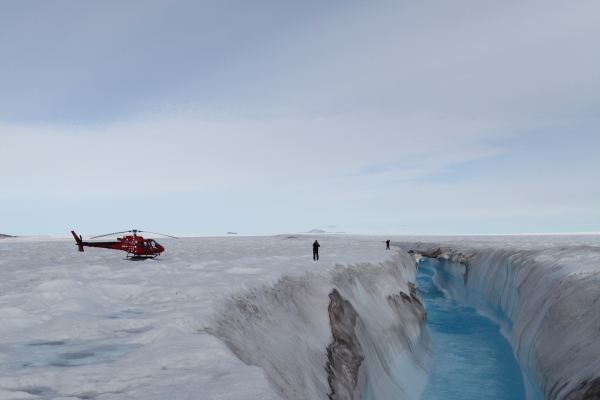The loss of ice from Greenland’s largest basin is occurring much faster and could contribute up to six times more to global sea-level rise by 2100 than climate models currently project, according to a study led by Dartmouth professor Mathieu Morlighem with researchers from the Technical University of Denmark (DTU) and the University of California, Irvine.
The authors report Nov. 9 in the journal Nature that the Northeast Greenland Ice Stream, known as NEGIS, could add a half-inch or more of water to sea levels by the end of this century, which is equivalent to the entire Greenland ice sheet’s contribution during the past 50 years.
The study combined satellite data and numerical modeling with GPS data collected from the harsh interior of Greenland over the past decade. In 2012, the intrusion of warm ocean currents caused the floating extension of the NEGIS to collapse, which has accelerated ice flow and triggered a wave of rapid ice thinning that has spread upstream. The researchers found that this thinning stretches up to nearly 200 miles inland from the Greenland coast—and that other glaciers on Greenland may be suffering the same fate.
Read more at: Dartmouth College
Co-authors Shfaqat Abbas Khan and Anders Bjork work near a river of meltwater on the remote Zachariae Glacier in Northeast Greenland. (Photo Credit: Shfaqat Abbas Khan, DTU Space)


